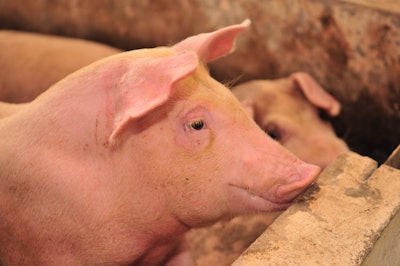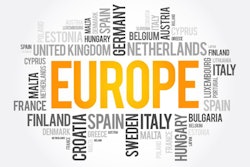
In the Philippines, another province has recorded its first cases of the disease, while the virus is confirmed in five districts of the Indian state of Meghalaya.
The source of live pigs that tested positive for the African swine fever (ASF) virus in Singapore last month has been identified as a large commercial farm in Indonesia.
On April 1, the outbreak began at a premises with more than 285,000 pigs on Bulan Island (Pulau Bulang). It is part of the Riau Islands province of Indonesia. This is according to a recent notification by the national veterinary service to the World Organisation for Animal Health (WOAH). Of the whole herd, around 35,300 animals died, 119,000 were killed and their carcasses destroyed, and 47,200 were slaughtered.
Source of the virus on the island is unknown. However, the official report indicates the possible involvement of mechanical vectors such as flies or fomites, or wild pigs.
Owner of the infected premises — indeed, the whole of the island — is identified as Indonesia’s largest conglomerate.
Riau Islands provincial government has expressed outrage that details of the outbreak have been published by WOAH, reports The Jakarta Post. This is despite the fact that it was the country’s animal health agency that presented the official notification.
Previously, the same source reported comments from the pig association in the province that the Riau Islands’ industry could be disrupted for a long time as a result of this outbreak.
Up to 90% of the region’s pigs could be hit by the disease, according to the body’s spokesperson. Furthermore, restocking cannot take place until the farm is completely free of the disease, and it could take four years for production to recover.
As well as the premises in Riau Islands, ASF has affected other parts of Indonesia so far this year. This includes Central Sulawesi (2,971 pigs), South Sulawesi (859) and East Nusa Tenggara (455). These figures were reported by the United Nations’ Food and Agriculture Organization (FAO; as of May 10).
Confirmation of ASF at Singapore slaughterhouse
In Singapore, ASF viral DNA was detected in around 150 pigs at a slaughterhouse in mid-April, according to the official notification to WOAH. After more than 50 of the pigs died, investigations were set up.
As pig rearing in the island state is forbidden, the infected animals must have been imported live. Their source was identified as the Riau Islands of Indonesia.
According to the Singaporean authorities, 95 of the pigs were culled and their carcasses destroyed, and 1,380 were killed for human consumption as processed products.
One year is the estimated time for live pig exports to resume from the Indonesian company to Singapore, according to Straits Times. Until the ASF outbreak, it supplied two-thirds of Singapore’s fresh pork requirements.
ASF hits Philippines province pig population
In the Western Visayas region, ASF has been identified as the cause of a 62% drop in the pig population of Iloilo. According to the provincial veterinarian, pig numbers have fallen to around 104,000 from more than 277,000 before the disease was first detected in September 2022. So far, cases have been recorded in 25 of the province's municipalities, reports the Philippine News Agency.
Despite this reduction, there is no shortage in pork supplies, officials say. This is because Iloilo previously produced three times its requirement for this meat. Much of the surplus was exported to the cities of Luzon.
Also in Western Visayas, Aklan province has reported its first cases of ASF, according to Philippine Star a week ago. As the virus was detected in two towns, it brings to 56 the number of the country’s provinces with ASF cases. Only 19 provinces are ASF free.
ASF developments elsewhere in Asia
In northeastern India, the Meghalaya state government has confirmed ASF outbreaks at five locations over the past month.
Last week, the disease was reported at government farms in the districts of East Khasi Hills and West Khasi Hills, as well as at a village in Ri-Bhoi. One month previously, the virus was detected in two villages in West Garo Hills, reported Times of India.
For the month of April, 17 ASF outbreaks are reported in 10 provinces of Vietnam, according to the FAO. They bring to 81 the country’s outbreaks so far this year, affecting 26 provinces/city regions.
Number of ASF-infected wild boar in South Korea has reached 3,120, according to Pig People (as of May 14).
Since the country’s first cases in 2019, infected wild boar have been found in four provinces. With no new outbreaks in domestic pigs, the total on South Korea farms so far this year remains at eight. These have directly affected 53,573 domestic swine.
In Eastern Malaysia, ASF remains a threat in the state of Sarawak. This is according to the Deputy Premier, reported The Borneo Post.
On the island of Borneo, this state and its neighbor Sabah have recorded a total of 75 ASF outbreaks in domestic and wild pigs since February of 2021. This is according to official notifications to WOAH, and the most recent cases reported were in October of last year.
Over the past few days, Russia’s veterinary service has declared to WOAH that the ASF situation has been resolved in Krasnoyarsk.
In this region of the Siberian federal district, five outbreaks were recorded in domestic pigs during March of this year. Affected were a total of 415 animals in two clusters approximately 70 kilometers apart.
View our continuing coverage of the global African swine fever situation.

















